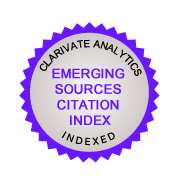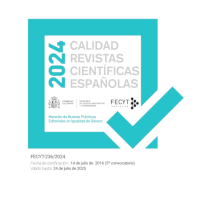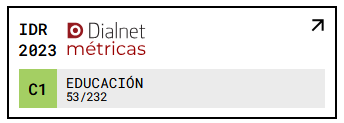Effective inclusion of talented students in the current school in the framework of the Capacity Development Program
DOI:
https://doi.org/10.18172/con.3588Keywords:
Social participation, open education, educational strategies, maker movement, competence learningAbstract
The main purpose of this work was to investigate how the introduction of active and participatory methodologies with talented students, favors on the one hand the talents to come and will be rewarded and, on the other hand, facilitates positive social interactions to the work as a team. An inclusive school must guarantee an education adapted to every student based on their own needs and interests. However, the design of the current educational system greatly hinders faculty bet by methodologies that foster the development of skills in the students in general and in particular the students with skills. Through the implementation of the Capacity Development Program, talented students have developed projects based on their own interests. Data based on structured questionnaires, observation sheets and interviews have been collected. Results shown in the present work, prove that the capacity development program is a suitable context to work in learning environments that commit to the students (and families) in the construction of their own knowledge. This program is a useful framework for the development of the students´ learning as they would outside the school, using ICT and collaborative work, as main tools.Downloads
References
Adell Segura, J. y Castañedo Quintero, L. (2010). Los Entornos Personales de Aprendizaje (PLEs): una nueva manera de entender el aprendizaje. En R. Roig Vila, R. y M. Fiorucci (Eds.), Claves para la investigación en innovación y calidad educativas. La integración de las Tecnologías de la Información y la Comunicación y la Interculturalidad en las aulas. Alcoy & Roma: Marfil & Università degli Studi Roma Tre, pp. 19-30.
Altun, F. y Yazici, H. (2010). Learning styles of the gifted students in Turkey. Procedia Social and Behavioral Sciences, 9, 198-202. https://doi.org/10.1016/j.sbspro.2010.12.136.
Baker, J. A., Bridger, R. y Evans, K. (1998). Models of under-achievement among gifted preadolescents: The role of personal, family, and school factors. Gifted Child Quarterly, 42, 5-14. https://doi.org/10.1177/001698629804200102.
Ballesta Pagán, J. y Cerezo Máiquez, M. C. (2011). Familia y escuela ante la incorporación de las tecnologías de la información y la comunicación. Educación XXI, 14(2), 133-156.
Cabrera, P. (2011). ¿Qué debe saber y saber hacer un profesor de estudiantes con talento académico? Una propuesta de estándares de formación inicial en educación de talentos. Estudios Pedagógicos, 37(2), 43-59. https://doi.org/10.4067/S0718-07052011000200002.
De Pro, A. J. (2013). Enseñar procedimientos: por qué y para qué. Alambique, 73, 69-76.
Flanagan, A. y Arancibia, A. (2005). Talento académico: un análisis de la identificación de alumnos talentosos efectuada por profesores. Psykhe, 14(1), 121-135. http://doi.org/10.4067/S0718-22282005000100010.
García-Bacete, F. J. (2003). Las relaciones escuela-familia: un reto educativo. Fundación Infancia y Aprendizaje, 26(4), 425-437. https://doi.org/10.1174/021037003322553824.
Goldsmith, L. T. (2000). Tracking trajectories of talent: Child prodigies growing up. In R. C. Friedman y B. M. Shore (Eds.), Talents unfolding, Cognition and development (pp. 89-117). Washington, DC: American Psychological Association. http://doi.org/10.1037/10373-005.
González-Torres, M. C. (2003). Claves para favorecer la motivación de los profesores ante los retos educativos actuales. ESE. Estudios sobre educación, 5, 61-83.
Hosseinkhanzadeh, A. A., Yeganeh, T. y Taher, M. (2013). Investigate attitudes of parents and teachers about educational placement of gifted students. Procedia Social and Behavioral Sciencies, 84, 631-636. https://doi.org/10.1016/j.sbspro.2013.06.616.
Kelemen, G. (2010). A personalized model design for gifted children´education. Procedia Social Behavioral Sciences, 2, 3981-3987. https://doi.org/10.1016/j.sbspro.2010.03.627.
Marín, V., Negre, F. y Pérez, A. (2014). Entornos y redes personales de aprendizaje (PLE-PLN) para el aprendizaje colaborativo. Comunicar, 42, 35-43. https://doi.org/10.3916/C42-2014-03.
Martínez, M. C. y Romero, M. A. (1999). Calidad de la educación e integración de las nuevas tecnologías. Comunicar, 13, 183-187.
Méndez Coca, D. (2015). Estudio de las motivaciones de los estudiantes de secundaria de física y química y la influencia de las metodologías de enseñanza en su interés. Educación XXI, 18(2), 215-235. https://doi.org/10.5944/educXXI.14016.
Navarro, M. (2009). Los nuevos entornos educativos: desafíos cognitivos para una inteligencia colectiva. Comunicar, 33, 141-148. https://doi.org/10.3916/c33-2009-03-005.
ORDEN de 30 de julio de 2014, de la Consejera de Educación, Universidad, Cultura y Deporte, por la que se regulan las medidas de intervención educativa para favorecer el éxito y la excelencia de todos los alumnos de la Comunidad Autónoma de Aragón desde un enfoque inclusivo. BOA Nº 152, pp. 25181-25223.
ORDEN ECD/717/2016, de 17 de junio, por la que se autoriza la continuación del Programa de “Desarrollo de Capacidades” y se convoca a los centros docentes públicos y privados concertados no universitarios de la Comunidad Autónoma de Aragón para participar en dicho Programa durante el curso 2016-2017. BOA Nº 137, pp. 18303-18321.
Oros, L. B, Menghi, M. S., Richaud, M. C. y Ghiglione, M. (2015). Educar en medios socialmente vulnerables. El valor de la capacitación docente. Contextos Educativos, 18, 79-92. http://doi.org/10.18172/con.2626.
Ozcan, D. y Bicen, H. (2016). Giftedness and technology. Procedia Computer Science, 102, 630-634. https://doi.org/10.1016/j.procs.2016.09.453.
Preckel, F., Götz, T. y Frenzel, A. C. (2010). Ability grouping of gifted students: Effects on academic self-concept and boredom. British Journal of Educational Psychology, 80, 451-472. https://doi.org/10.1348/000709909X480716.
Romero Ariza, M. (2010). El aprendizaje experiencial y las nuevas demandas formativas. Revista de Antropología Experimental, 10(8), 89-102.
Schneider, W., Stumpf, E., Preckel, F. y Ziegler, A. (2012). Projekt zur Evaluation der Begabtenklassen in Bayern und Baden-Württemberg: Abschlussbericht 2012 [Evaluation of gifted classes in Bavaria and Baden-Württemberg: Final report 2012]. Unpublished report of study results, University of Würzburg, Würzburg.
Shore, B. y Kanevsky, L. (1993). Thinking processes: Being and becoming the gifted. En K. Heller, F. J. Monks y A. Passow (Eds.), International handbook of research and development of giftedness and talent (pp. 133-147). Oxford: Pergamon Press.
Simón, C., Giné, C. y Echeita, G. (2016). Escuela, Familia y Comunidad: Construyendo Alianzas para Promover la Inclusión. Revista Latinoamericana de Educación Inclusiva, 10(1), 25-42.
Vaello, J. (2011). Cómo dar clase a los que no quieren. Barcelona: Graó.
Downloads
Published
How to Cite
Issue
Section
License
The authors retain copyright of articles and authorize Contextos Educativos. Revista de Educación the first publication. They are free to share and redistribute the article without obtaining permission from the publisher as long as they give appropriate credit to the editor and the journal.
Self-archiving is allowed too. In fact, it is recommendable to deposit a PDF version of the paper in academic and/or institutional repositories.












